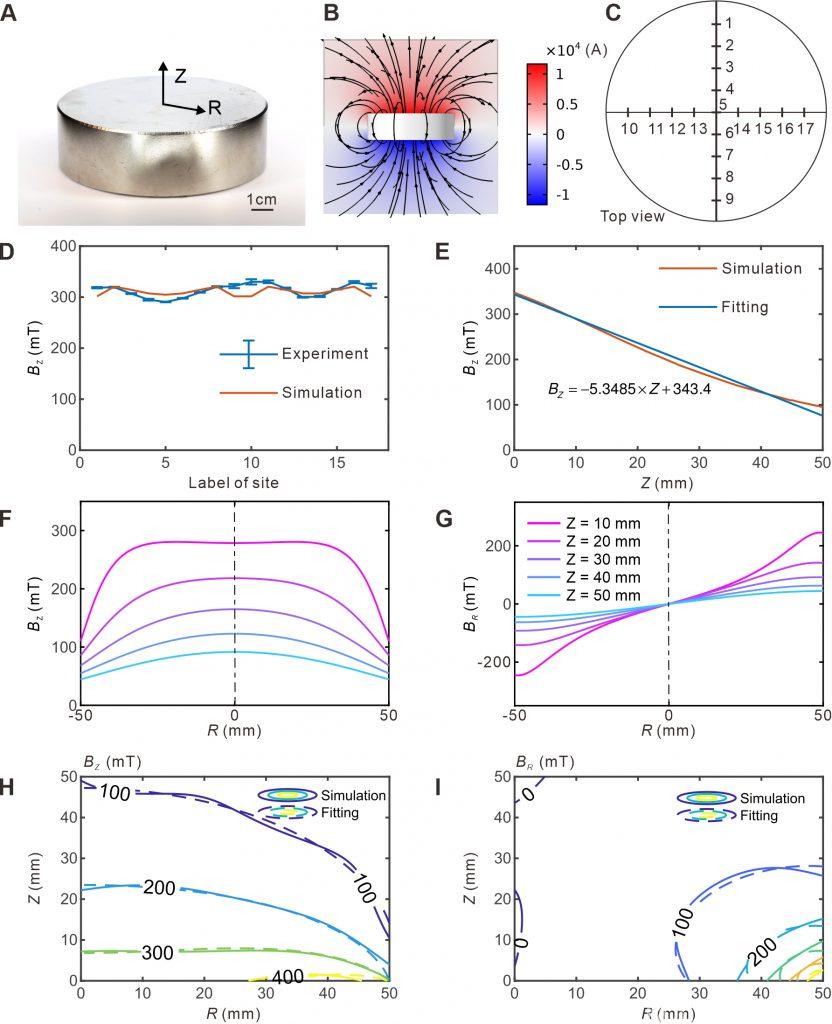I find I make wrong table in my paper (Soft electromagnetic actuators), here I try to correct it.
In the paper, we use a plate magnet (Fig. S3A, with a diameter=10 cm and height=3 cm, N45 coated with Nickel) which can be purchased via the link(www.magnet-shop.com).
At first, we use a Gauss meter (Gaussmeter HGM09s, Goudsmit Magnetic Systems) to measure the magnetic field. Then we fitting the experimental data with Comsol (Fig. S3B& Fig. S3C). Only one parameter needs to fit, the remnant magnetization.
From the manufacture, we obtain the remnant magnetization is 1.32-1.37 T. We obtain the remanent magnetization of the plate magnet, 1.31 T from fitting (Fig. S3D). It can use a simple equation to fit the magnetic field at the center of the magnet where R=0 (Fig. S3E).
Also we can know the distribution of the magnetic field from simulation(Crosection: Fig. S3 F&G, Field: Fig. S3H&I). With Matlab (lsqcurvefit, or fit) we are able to fitting the magnetic field with the following equations:

The parameter P and Q are not correct in the paper (Table S1) which comes from a unknow version even thou it can generate a similar magnetic field, here I provide the orginal data (Matlab code and data) and the program to plot the Fig. S3 F,G,H,I:

Fig. S3. Characterization of a plate magnet. (A) Picture of the plate magnet. (B) Simulated spatial distribution of the magnetic field around a plate magnet. The legend shows the strength of the magnetic potential. (C) Measurements of the magnetic field were taken at the labeled sites 6 mm above the surface of the magnet. (D) Comparison of magnetic flux density between the experimental measurement and the simulation corresponding to the labeled sites in (C). (E) Simulated and fitted magnetic flux density along the symmetry axis of the magnet at R=0. (F&G) Distribution of the two components of the magnetic field at different heights Z above the surface of the magnet. (H&I) Contour maps of a 3D numerical fitting of the magnetic field on the top of the plate magnet compared with the simulated results. (Photo Credit: Michael Drack and Guoyong Mao/Johannes Kepler University Linz)
Last Updated on 2020-11-19 by Rocket Mao